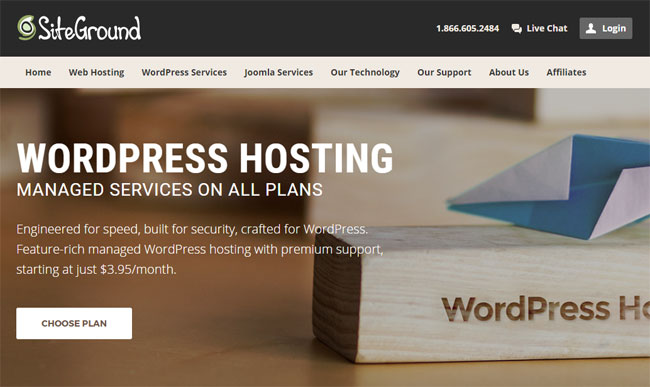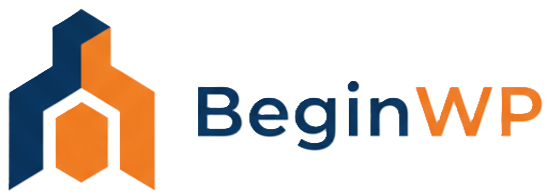Have you ever wondered how to start a new WordPress blog or website, the most easiest possible way ever? Well then you would need some guidance so that you can get started quickly. Fortunately, setting up a new website or blog has nowadays become so easy that anyone can do it, and the best thing is that you don’t even need to hire a programmer for this task. Creating a website has now become a simple weekend DIY (Do it yourself) project.
This small guide is aimed towards the basics of creating a website. Thanks to the technology, now anyone can easily create a website by using a CMS (content management system) like WordPress, Joomla, Drupal and many others. Of all these CMS’s, WordPress is by far the easiest to setup and use. Therefore in this article, we will be using WordPress to start a blog or website. This CMS powers nearly 60 million websites and the popular blogs on the internet use this CMS to power their website.
WordPress helps you create websites for:
- Bloggers
- Businesses
- Newspapers and magazines
- Artists
- Portfolios
- Photographers
- eCommerce
- And more
In short, it can be said that WordPress can be used for creating any type of websites. Automattic, the company behind WordPress makes sure to release a new and updated version regularly. If a bug or vulnerability is found in the CMS, then an update is released and all users can instantly update to the latest version.
Note that in this article, you’ll be learning how to get started with a self-hosted WordPress site, which is different from what you can create on WordPress.com. A self-hosted WordPress blog/site means you have far more control on the looks of your site, and you host your website, whereas if you’re opting for creating a blog on WordPress.com, then your site is hosted on their servers, and you’ve got restrictions on installing new themes and plugins. That’s why, WordPress.org (or self-hosted WordPress) is the ideal choice for many.
Here are the steps/points mentioned in brief that you need to perform to start a website or blog.
Step 1. Purchase a Domain Name
The first thing that you will need to do is to think of a good domain name. A domain name is the URL of a website. For example, the domain name of this blog is beginwp.com. Take your own time to think of a domain name that describes your blog, business or website. The problem that many people face while selecting a domain name is that many times the exact phrase/domain name is reserved already, which means you cannot purchase it. Think of a unique type of domain name and go for it. To check domain availability, you can use Namecheap.com, which is a domain registrar from where you can purchase the domain. Once you purchase a domain name, it’s time to move to step 2.

Step 2. Purchase Webhosting
Now that you have purchased a domain name, you will need to purchase space on a webhost. A web hosting service is a place where you store your files on the internet. This helps in making your web page available to everyone on the world wide web (WWW). Web hosting companies have their own servers, which are online 24×7 so that your website is accessible every time.
SiteGround and WPEngine are two popular webhosts that we at BeginWP suggest. Select a webhosting package from any one of them that suits your needs. You can also purchase a domain name directly from them. Once you have purchased webhosting package, you will get an email from your webhost informing your login details and nameserver information. Note down both the details in a safe place.

Now, login to your domain registrar from where you have purchased your domain name and add the nameserver information there. For example, if you have purchased your domain name from Namecheap, then login to their panel and then from the left sidebar, click on “Domain name server setup” and enter your nameserver there (Refer below image).

Step 3. Install WordPress
Now it’s time to install WordPress. Login to your cPanel (also known as web hosting control panel) and then use Fantastico or Softaculous, which are one click auto-installers to install WordPress. It will take only 5 minutes to install WordPress using these script installers. Or if you prefer, you can also install WordPress manually, but it’s not that easy for a beginner and that’s why we would advise you to use Fantastico or Softaculous for this task. Check out how to install WordPress using Fantastico.
Step 4. Install a Theme
After installing WordPress, it’s time to install a theme that suits your needs. WordPress, by default comes with a very simple theme and therefore you need to search for a better theme. We don’t recommend you to search for free themes on Google as many themes comes with an encrypted code in the footer, that are built solely for the purpose of getting a backlink. Such themes are very poorly coded.
So you may ask the question that from where can you get free themes? The best place to get free themes is the WordPress themes directory. If you are searching for paid themes then you can try out ElegantThemes, Themify, Genesis Framework, but there are many more. The plus point of paid themes, also known as WordPress Premium themes is that you get free support for the purchased themes, which means you can ask any question that comes to your mind to their support department. Paid themes are also updated regularly to fix bugs and add more features.
Step 5. Get familiar with WordPress
When you are done installing the theme, it’s time to get familiar with WordPress backend and the theme. Every theme comes with its own theme options page from where you can customize the theme to suit your needs. If you are new to WordPress, then WordPress Codex should be your starting point to get help. Read the articles in the codex and get familiar about how the backend of WordPress works. WordPress is really very easy and simple to use and in case of a doubt, you can also head over to their forums where you can ask a question.
So that’s a beginner’s guide to purchasing a domain name, setting up web host, installing WordPress and then the theme. Also check out our WordPress tutorials section for more such useful tutorials. Feel free to comment below if you’ve stumbled upon a problem.
Hope this article will help you in starting a WordPress blog or site and clearing the confusion surrounding it.
